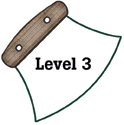|
National Science Education Standards
NA
|
|
Benchmarks
Many predictions from Einstein’s Theory of Relativity have been
confirmed on both atomic and astronomical scales. Still, the search continues
for an even more powerful theory of the architecture of the universe.
(Page 245)
Models are often used to think about processes that happen too slowly,
too quickly, or on too small a scale to observe directly, or that are
too vast to be changed deliberately, or that are potentially dangerous.
(Page 269)
Different models can be used to represent the same thing. What kind
of a model to use and how complex it should be depends on its purpose.
The usefulness of a model may be limited if it is too simple or if it
is needlessly complicated. Choosing a useful model is one of the instances
in which intuition and creativity come into play in science, mathematics,
and engineering. (Page 269)
|

